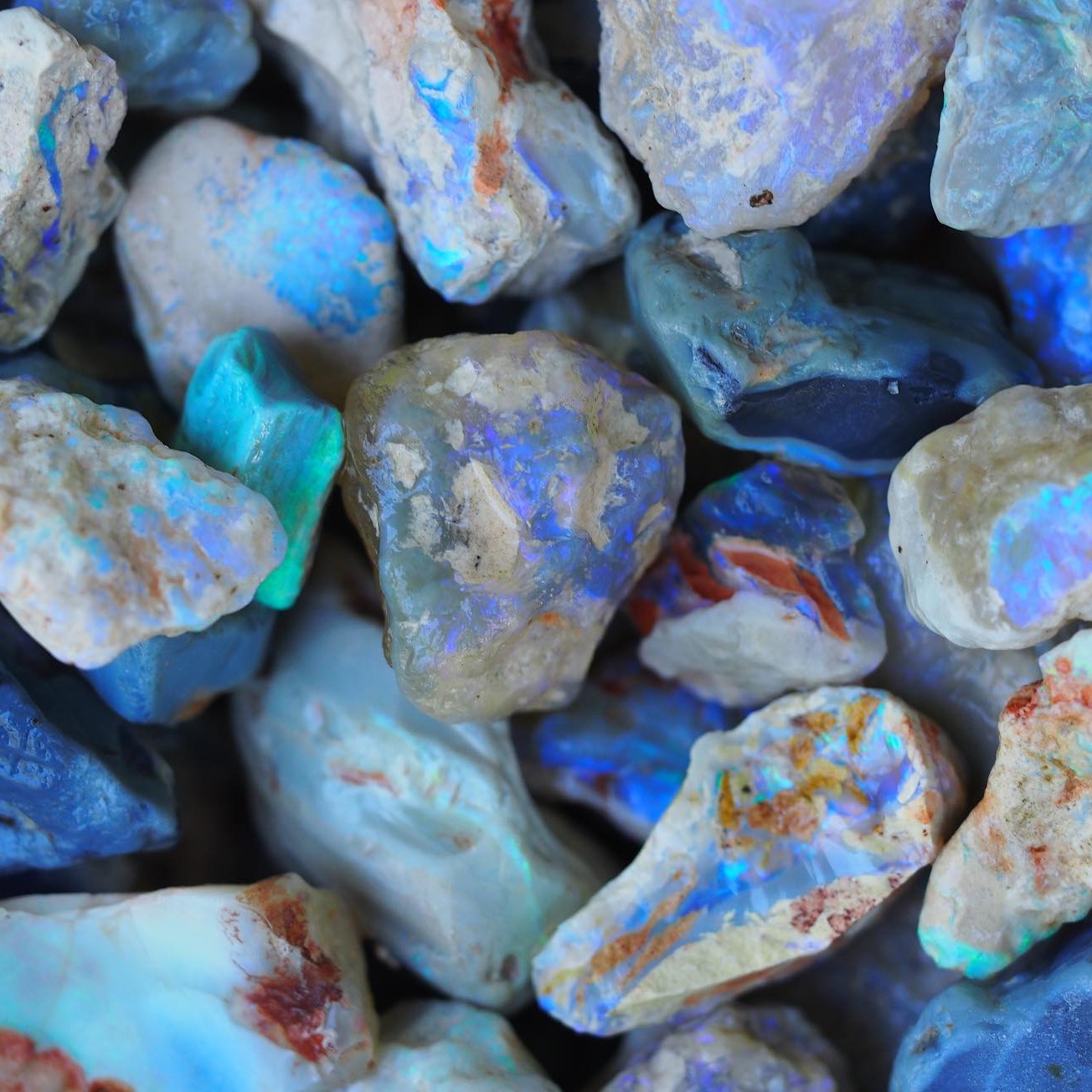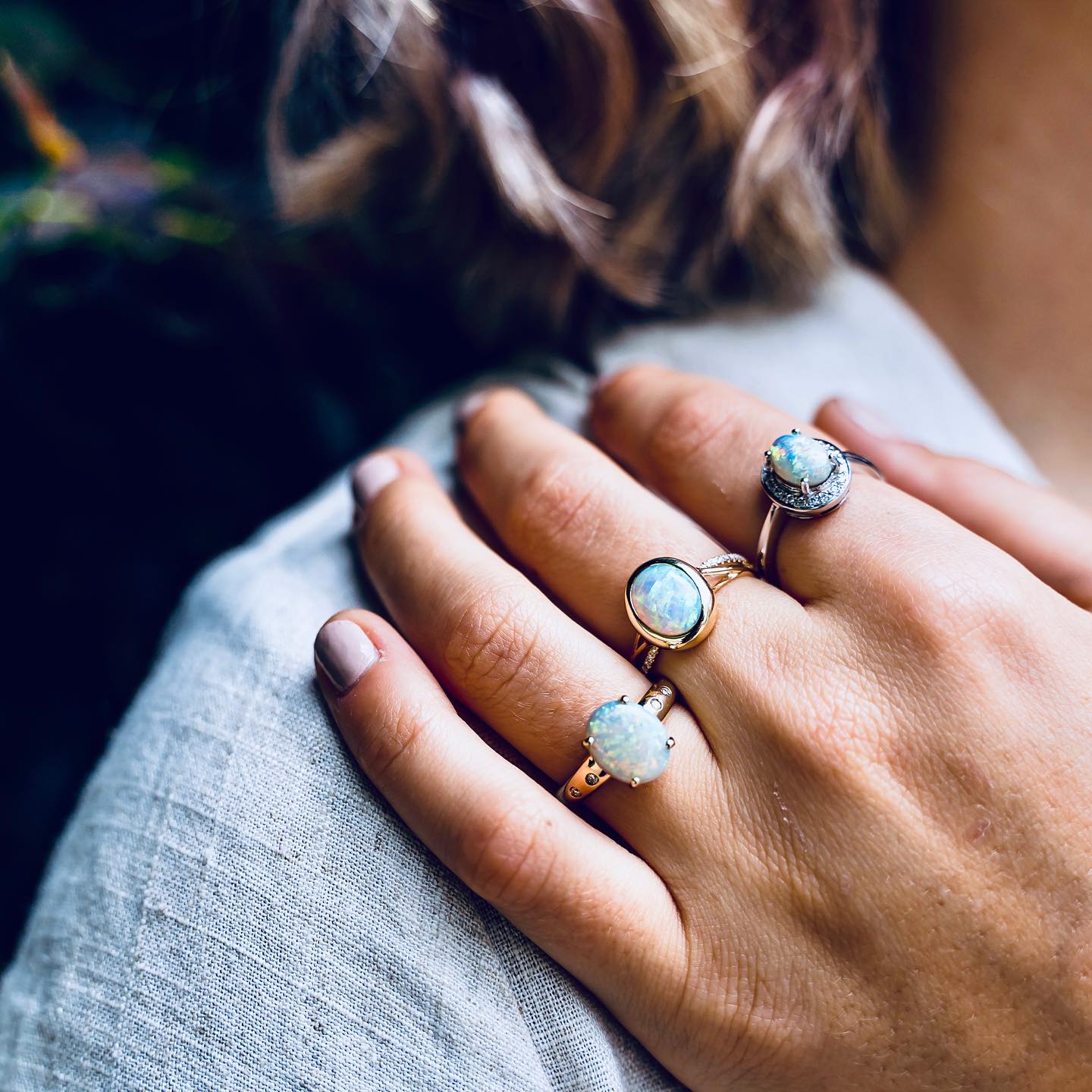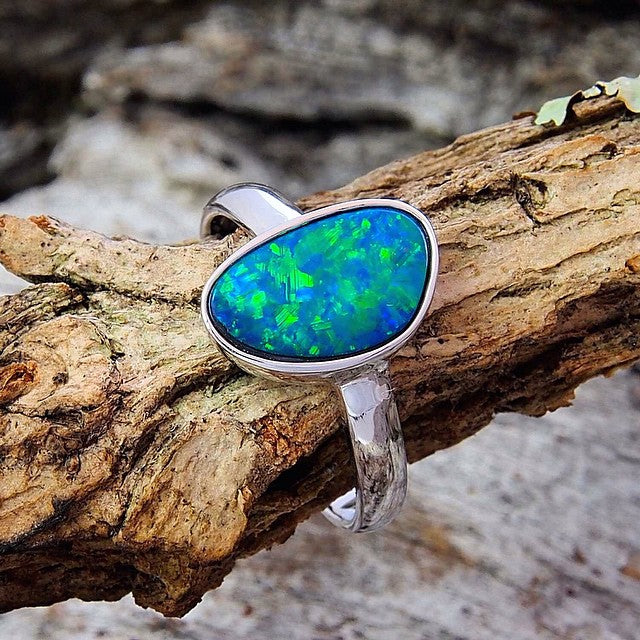Article: What Color Is Opal? A Guide To The Rainbow Within

What Color Is Opal? A Guide To The Rainbow Within
What color is opal? It’s a question that reveals the true magic of this one-of-a-kind gemstone. But opal isn't just a color—unlike other gems that display a single, static hue, opals shimmer with a dynamic kaleidoscope of ever-changing hues that seem to dance and shift as you move them. From fiery reds and oranges to cool blues and greens, opals can exhibit every color of the rainbow.
In this guide, you'll discover:
-
What causes opal’s colors
-
How different types of opal look
-
The science behind 'play-of-color'
-
The meanings behind various opal hues
-
And answers to the most frequently asked questions
Is Opal a Color?
Let’s start with a common question: Is opal a color? While 'opal' may be used to describe iridescent shades in fashion or paint, opal isn’t a single color—it’s a gemstone known for its multi-colored display. When people say 'opal blue color' or 'the color opal', they’re referring to the iridescent effect caused by light diffraction inside the stone.
The Secret Behind Opal’s Colors
Opals are made of hydrated silica, formed from a mixture of water and silica-rich solutions. Over millions of years, these solutions seep into cracks in rock and slowly evaporate, leaving behind layers of silica spheres.
These tiny spheres are stacked in a perfectly uniform grid. As light passes through, it bends and bounces between the gaps, creating a dazzling display of rainbow hues—this phenomenon is known as play-of-color.
The size and spacing of these spheres determines what color appears in the opal stone.
Large spheres = longer wavelengths → red, orange
Small spheres = shorter wavelengths → blue, violet
Fun fact: The rarest and most valuable opals display red—the rarest opal color—while blue is the most common.

The Opal Color Palette
What color is an opal? Quite literally—all of them. Here’s a closer look at common opal stone colors you might see:
-
Blue – The most common, calming and deep
-
Green – Bright, natural, energizing
-
Yellow – Cheerful, warm, sunny
-
Orange – Fiery, passionate
-
Red – Rare, intense, dramatic
-
Pink – Romantic, delicate
-
Purple/Lavender – Dreamy, mystical
-
Aqua – Oceanic, serene
Opal Color Chart
Here’s a simplified opal color chart breaking down the main types of opal and their common color traits:
| Opal Type | Body Tone | Color Traits |
|---|---|---|
| White Opal | White, Cream | Pastel play-of-color |
| Black Opal | Dark Gray, Black | Red, vivid and full spectrum brilliance |
| Crystal Opal | Transparent, Translucent | Full-spectrum brilliance, neon hues |
| Boulder Opal | Brown (Ironstone backing) | Vivid blue, green, red etc |
| Fire Opal | Orange, Red, Yellow | Fiery body color, some with color |
| Common Opal (Potch) | Various | No play-of-color |
Opal Mining and Sources
Australia is the world's leading source of opal, producing about 95% of the global supply. Notable opal fields include:
-
Lightning Ridge: Known for its rare and valuable black opals.
-
Coober Pedy: Famous for white and crystal opals.
-
Andamooka and Mintabie: Produces a variety of opals, including matrix and crystal types.
-
Queensland: Famous for boulder opals.
Other countries like Ethiopia, Mexico, and Brazil also produce opals, each with distinct characteristics including color, appearance and body tones.

Types Of Opals And Their Color
Opal that displays a vivid play-of-color is called 'precious opal', while opal that lacks play-of-color and is typically opaque is called 'common opal'—otherwise known as 'potch'.
White Opal Color
White opal is the most common opal variety. Its light body tone gives it a soft, creamy look, and it often showcases delicate pastel flashes of pink, green or blue. The white opal color makes it a popular choice for everyday jewelry and October birthstone gifts.
Black Opal Color
Black opal is the rarest and most valuable opal type. Despite its name, it’s not black through and through—the term refers to its dark body tone, which creates a dramatic contrast that makes the opal colors stand out more vividly. Expect intense red, green, yellow and blue flashes that seem to leap off the stone.
Crystal Opal Color
Crystal opal is transparent to translucent and often exhibits the most brilliant play-of-color due to its clarity. These stones can contain a full spectrum of opal stone colors, from rich pinks to electric greens and purples.
Boulder Opal Color
Boulder opal forms in cracks within ironstone rock and retains some of its host rock as a backing. This gives the gem an earthy, rugged look with vivid opal colors often in blue, green or purple, juxtaposed against the brown matrix.
Potch Opal Color
Potch is another name for common opal, which doesn’t display play-of-color. Why? The silica spheres in potch are either too small, irregular or absent entirely—so light can’t diffract. While potch is less valuable, it often forms the natural base for black or boulder opals.
Factors Influencing Opal's Appearance
Several factors can affect the color and quality of opal:
-
Body Tone: This refers to the background color of the opal, ranging from black to white. Black opals, with their dark body tone, often display colors more vividly due to the contrast.
-
Transparency: Opals can be opaque, translucent, or transparent. Crystal opals are transparent to semi-transparent and can exhibit brilliant play-of-color.
-
Pattern: The arrangement of colors can form various patterns like pinfire, harlequin, or broadflash each adding to the opal's uniqueness and value.

Discovering Opal Color Patterns
Opal color isn’t just about the shades — it’s also about the pattern. These unique patterns influence both the appearance and value of the gemstone, and ensure no two opals are alike.
Popular opal color patterns include:
-
Harlequin – Rare, with bold, checkerboard-style patches of color
-
Pinfire – Tiny, sparkling dots scattered across the surface
-
Broadflash – Large sweeping flashes of color that move with the light
-
Ribbon – Long, narrow streaks of color, like flowing ribbons
-
Straw – Thin, straw-like lines or waves of color
Each pattern adds personality and depth to the stone, creating endless variety in opal design.
Why Opal Color Patterns Matter
Whether you're buying an opal ring, pendant, or earrings, the color pattern is just as important as the hue. It can make a stone look fiery and bold, or soft and elegant.
-
Adds uniqueness and character to each opal
-
Helps determine the value and rarity of the stone
-
Enhances the beauty of all opal types — black, white, boulder, and crystal
-
Makes every piece of opal jewelry a personal, one-of-a-kind treasure

Caring for Opal Colors
Opals are relatively soft (5.5–6.5 on the Mohs scale) and contain water, making them sensitive to heat and sudden temperature changes. Proper care ensures that opals retain their mesmerizing appearance for generations. To maintain their beauty and full spectrum of colors:
-
Avoid exposure to extreme temperatures and direct sunlight.
-
Store in a padded cloth bag or jewelry box to prevent scratches.
-
Clean gently with a soft, damp cloth; avoid ultrasonic cleaners and harsh chemicals.
Opal: The Rainbow Birthstone
In addition to being the most colorful precious gemstone on the planet, opal is also the October birthstone. Many October babies are drawn to opal is it has so many colors and patterns, representing the different aspects of their birth month personalities.
To sum it up, opal is not just a color—it’s every color. From oceanic blues to fiery reds, ethereal pinks to magical purples, the colors of opal make it one of the most mesmerizing gemstones on Earth.
Whether you're drawn to the timeless white opal color, the intensity of black opal color, or the bold contrast of boulder opal color, there’s an opal and color pattern out there for everyone.
In the end, the color of opal isn’t just a visual experience—it’s a story, a science, and a symbol of beauty crafted by the earth over millions of years. So next time someone asks 'What color is an opal?', you’ll know the answer lies in the rainbow.





